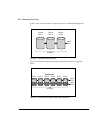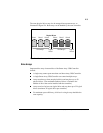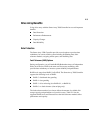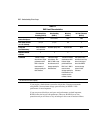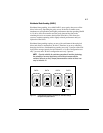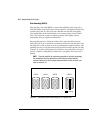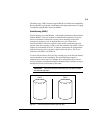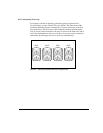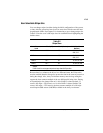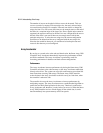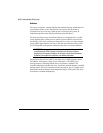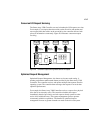
E-10 Understanding Drive Arrays
Writer: Rickard Project: Compaq Smart Array 3200 Controller Reference Guide Comments: 340862-002
File Name: L-APPE.DOC Last Saved On: 12/7/98 9:30 AM
COMPAQ CONFIDENTIAL - NEED TO KNOW REQUIRED
No Fault Tolerance (RAID 0)
RAID 0 does not provide fault tolerance. This level of RAID stripes data across
all the drives in the array, but it does not incorporate a method to create
redundant data. Therefore, if you choose this RAID option for any of your
logical drives, you will experience data loss for that logical drive if one physical
drive fails.
However, because none of the capacity of the logical drives is used for
redundant data, RAID 0 offers the best processing speed and capacity. For this
reason, you may consider assigning RAID 0 to drives that require large capacity
and high speed but do not contain critical data.
Before choosing the RAID 0 option, consider the following:
■ Disk failure will result in data loss for all RAID 0 logical drives.
■ You cannot assign an online spare to an array containing a RAID 0
logical drive.
Online Spare
During configuration, consider assigning an online spare to further improve
your system’s fault tolerance. An online spare (sometimes called a hot-spare) is
a drive the controller uses when a drive failure occurs. If a drive fails, the
controller rebuilds the data that was on the failed drive onto the online spare.
The controller also sends data that it would normally store on the failed drive
directly to the online spare.
The online spare improves the overall system fault tolerance by automatically
replacing a failed drive and quickly restoring the system to full RAID fault-
tolerance protection. During the time the system is operating in the interim
recovery mode with the failed drive, the system is vulnerable to an additional
drive failure.
You can install up to four online spares for each Smart Array 3200 Controller.
To provide an online spare, you must have at least one installed but unassigned
physical drive and the system must be running some type of fault-tolerance
method (RAID 1, RAID 4, or RAID 5).
Spare drives are assigned automatically to all volumes in an array and can be
assigned to multiple arrays connected to the same controller.



